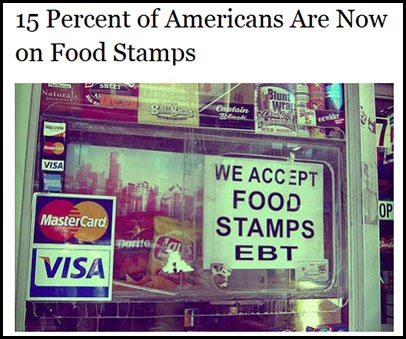The Return of ‘Food Stamps’
In my home town my dad partially owned (with his two brothers) a general store and they somehow survived through the ‘great’ depression of of the 1930s. Many times when my dad had consumed a reasonable amount of alcohol (i.e., was drunk) he would often tell me of the depression years.
When he shared these stories with me I was probably somewhere around 8 to 15 years of age and I heard these stories many times. At the time, which would have been the 1960s, which was a bountiful time of plenty, such stories did not mean a great deal to me.
He would talk of food stamps and ration coupons and how they were only able to provide people with the amount of controlled goods for which they had stamps or coupons; which were apportioned and allocated by some government agency. Foods controlled by food stamps included meat (including processed meats), flour, butter, sugar, cereals, tea, coffee, and cheese—and probably many others that I cannot remember him mentioning. Also non-food items such as petrol, kerosene, and tobacco were controlled with coupons.
Depending on the type of coupon it either allowed you to obtain the goods at a significantly reduced price, for free, or simply—as in the case of petrol—controlled the amount you could purchase. In those cases where the storekeeper made a loss (as you would, providing goods for free) the government provided compensation up to the cost price of the goods. Hence no profit was made on goods provided against a coupon.
In order to re-stock the shop they had to provide the redeemed coupons so there was no way they could provide people with goods in excess of the coupons they held; even people they had known many years and/or who were friends of the family.

The food stamps in use in America allow people to get five days worth of ‘free’ food for one person and includes things like oats, pasta, rice, eggs, bread, potatoes, frozen vegetables, and frozen (pre-packaged) meat.
I guess I saw this as yet another indicator that all is not well with the world when 46 million Americans, which is more than double the population of Australia (which is currently—more or less—22 million), depend of government food stamps to get enough food to eat.
[Image links to main article. Use Ctrl+Click to open in a new Tab.]

